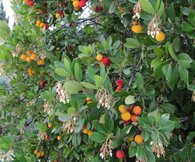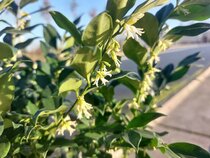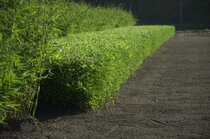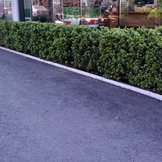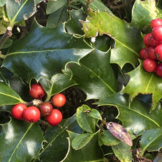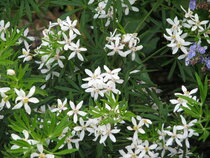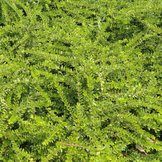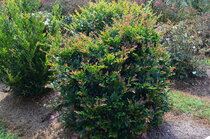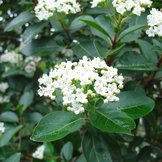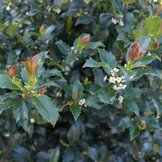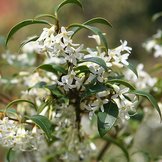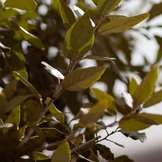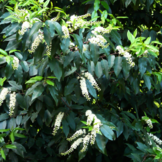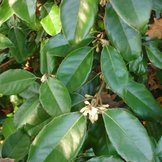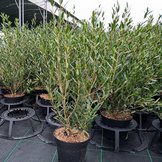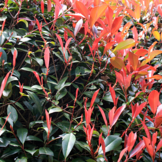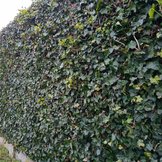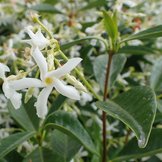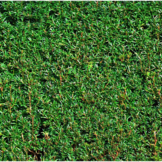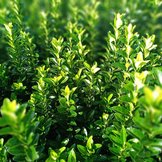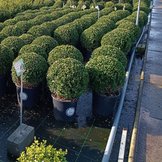Evergreen hedges
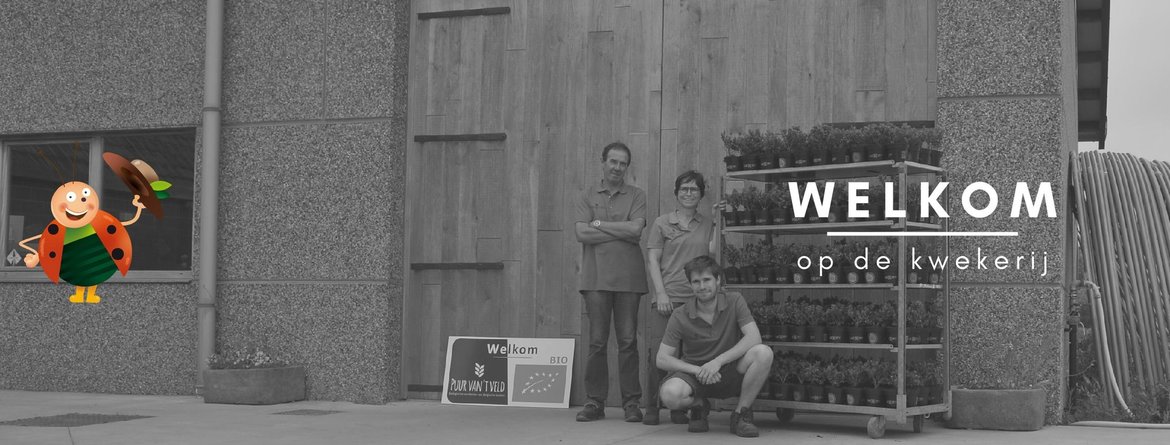
Need an evergreen, strong hedge? Straight from the nursery? Then you are in the right place!
What advantages do hedge plants that stay green all year round offer? Discover all the advantages and varieties below!An evergreen hedge, that's 100% privacy in your garden
A maintenance-free hedge
A 365 hiding place for birds and insects
The ultimate natural windbreak
An evergreen hedge, that's 100% privacy in your garden
When you choose an evergreen hedge, you choose privacy all year round!
A maintenance-free hedge
Evergreen hedge plants make your garden one less chore! Because these plants remain green all year round, you will not suffer from leaf fall. Definitely a big advantage! If you have a swimming pond and/or pool in your garden and are tired of fishing for leaves, evergreen garden plants are also the best solution.
A 365 hiding place for birds and insects
Because the plant does not lose leaves, it is an ideal hiding place for birds and insects during harsh winter days. But these hedges also serve as hiding or breeding places at other times.
The natural windbreak par excellence
Fences, trellises or wooden panels can be hard hit by strong gusts of wind. With a hedge that stays green during the winter, you have a natural windbreak every day of the year, without damage from strong winds.
- 10 % EXTRA DISCOUNT on all plants when picked up at our nursery (settled upon collection)
Evergreen hedge plants come in many shapes and sizes.
Climbing evergreen hedge plants
If you have fencing or a fence (tip! with top tube), climbing plants such as ivy and Tuscan jasmine are ideal as a hedge.
Advantages of a climbing hedge
Save space (narrow keeping)
Quickly create a dense, green hedge
A natural hedge
Easy to maintain (prune once a year)
Semi evergreen/leafy hedges
There are also hedge plants that stay green during mild winters, but still lose their leaves during a more severe winter. Ligustrum or privet, among others, is an example of this. To some extent, they offer 100% privacy in winter. Beech hedges are also a rather semi-evergreen hedge, as the leaves remain dry on the plant during the winter. However, they are often wrongly placed in the group of foliage hedge plants.
Plants suitable for low hedges
Not every type of plant is suitable for low hedges. Ilex crenata or Japanese holly, among others, is an ideal low hedge. Physically, it is very similar to Buxus, but without the known fungal diseases and Buxus moth. It is important that Japanese Holly should be planted in acidic soil. Euonymus japonicus (green spire) is also a popular, strong boxwood substitute. Below is a small overview of species suitable for low and higher hedges;
Hedges up to 30 cm high:
Ilex crenata or Japanese Holly
Euonymus japonicus 'green spire
Lonicera nitida maigrün - Chinese honeysuckle
Alternatively, Taxus baccata is also possible (although 30 cm is tight)
Hedges up to 50 cm high:
The hedges listed above
Osmanthus burkwoodii or mock holly
Phillyrea angustifolia or stone lime
Elaeagnus ebbingei compacta or olive willow
Viburnum tinus or snowball
Choisya ternata white dazzler or Mexican orange blossom
Hedera - ivy
Ilex meserveae - blue holly
Hedges up to 100 cm
The plants listed above, excluding Euonymus
Ilex aquifolium or true holly
Fargesia or bamboo (non-spreading)
Quercus Ilex or holm oak
Photinia carré rouge or medlar
Hedges taller than 100 cm (up to pruning height)
Plants listed above, except choisya ternata white dazzler and lonicera nitida maigrun
Evergreen or evergreen hedge plants are very popular. Most medium-growing hedges only need to be trimmed once a year. The faster-growing hedges, such as olive willow (elaeagnus ebbingei), may need a 2nd pruning. The advantage of an evergreen hedge is also that there is little or no leaf fall. So no leaves need to be cleared up throughout the year (and especially during autumn).
Planting distance
The planting distance of hedges varies somewhat depending on the species. There are species that grow wider and others that show more upright growth.
In general, you can take the following rules to measure the correct planting distance:
For plants smaller than 40/50 cm, an average of 5 to 7 - pieces are placed/planted per metre.
For plants measuring between 40/50 and 100 cm, on average 3 to 4 pieces.
For plants larger than 100 cm, an average of 2 to 3 pieces.
